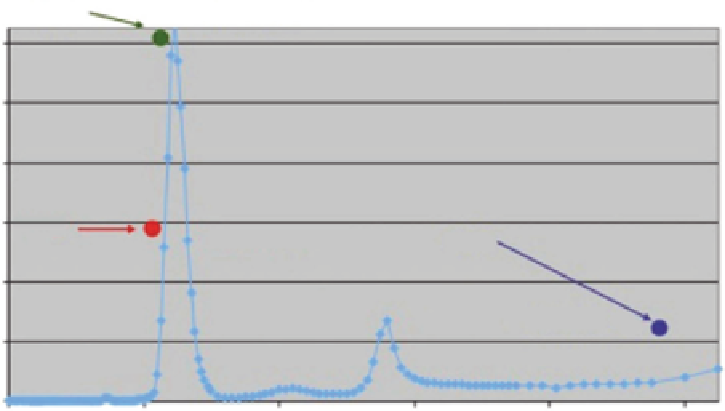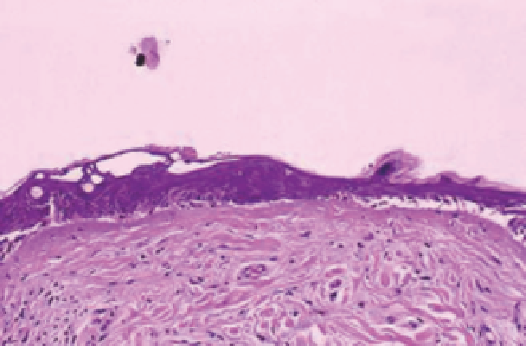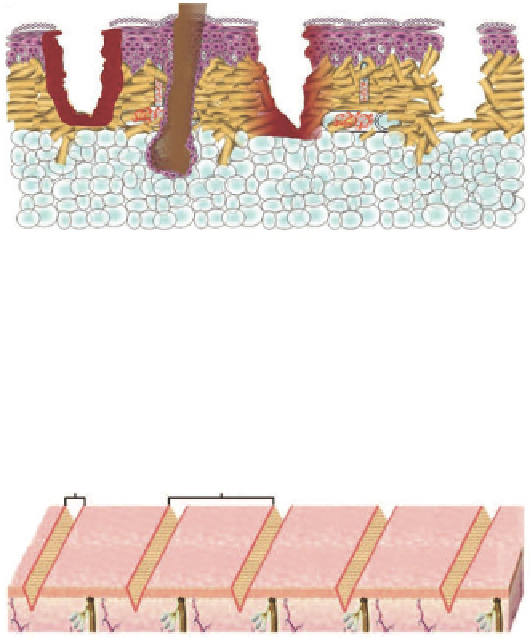Biomedical Engineering Reference
In-Depth Information
12, 500 cm
-1
2940nm Er:YAG
12000
10000
8000
6000
2790nm YSGG
1,000 cm
-1
5, 000 cm
-1
4000
10, 600nm CO
2
2000
0
500
2500
4500
Wavelength (nm)
6500
8500
10500
Figure 7.1
Absorption of energy by water as a function of wavelength. A 10,600-nm (CO
2
) laser has a low coeffi cient of absorption of approximately 1000 cm
−1
,
which produces a relatively high amount of coagulation in proportion to ablation. A 2790-nm (YSGG) laser has an intermediate coeffi cient of absorption of
approximately 5000 cm
−1
, which produces a relatively balanced amount of ablation in proportion to coagulation. A 2940-nm (Er:YAG) laser has a high coeffi cient
of absorption of approximately 12,500 cm
−1
, which produces a relatively higher amount of ablation in proportion to coagulation.
Abbreviations
: CO
2
, carbon
dioxide; Er:YAG, erbium-doped:yttrium-aluminum-garnet; YSGG, yttrium-scandium-gallium-garnet laser.
CO
2
10.600 nm
thermoablative
Er:YSGG 2.790 nm
Er:YAG 2.940 nm
thermoablative
Er:YSGG 2.940 nm
ablative
Figure 7.3
In the variants of ablative fractional laser therapy, a wavelength- and
parameter-dependent coagulation zone (microscopic coagulation zone, red
margin) of differing extent develops.
Abbreviations
: CO
2
, carbon dioxide;
Er:YAG, erbium-doped:yttrium-aluminum-garnet; YSGG, yttrium-scandium-
gallium-garnet laser.
Source
: From Ref. 53.
Figure 7.2
Photomicrograph showing coagulated epidermis after one pass of
confl uent carbon dioxide laser (7 J/cm
2
, 1 ms, 3-mm spot); note that water in
epidermis has been “vaporized” but epidermal skeleton remains.
150
μ
m
1350
μ
m
epidermis and dermis to variable depths depending on the
energy, wavelength, and beam dimensions (Fig. 7.3) (6). Most
devices produce vertical columns of damage in the skin that
have been termed microscopic treatment zones (MTZs). One
exception (Palomar 2940 nm “groove” optic, Palomar Medical
Technologies, Burlington, Massachusetts, USA) creates linear
“grooves” in the skin (Fig. 7.4). Within an MTZ, there are areas
of ablation (microscopic ablation zones) and areas of thermal
damage (microscopic coagulation zones) (Fig. 7.3) (7).
Although there are differences in each ablative wavelength,
parameters can be adjusted to produce somewhat comparable
injury and effects within the skin. The most important determi-
nants of wound healing and clinical effi cacy are (
i
) the percent-
age (cross-sectional area) of skin ablated (a.k.a. density), (
ii
) the
diameter of the individual microwounds, and (
iii
) the depths of
the individual injuries. The ratio of ablation to coagulation in
the microwounds might also play an important role in wound
Figure 7.4
Grooves in skin formed by ablation and coagulation created by the
Groove Optic.
Source
: From Palomar Medical Technologies.
healing and cosmetic outcomes. No study has examined the
role of thermal damage as an independent parameter. In other
words, the total volume of injury (ablative plus coagulative)
might be similar, but if the volumes comprise different ratios of
ablation to coagulation, wound healing and cosmetic improve-
ment might vary. Also, although ablation appears to achieve


















